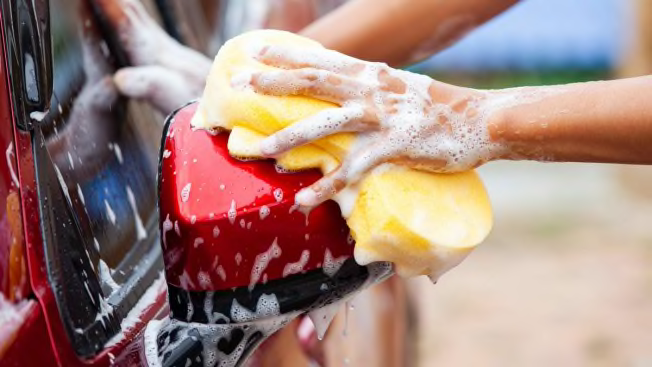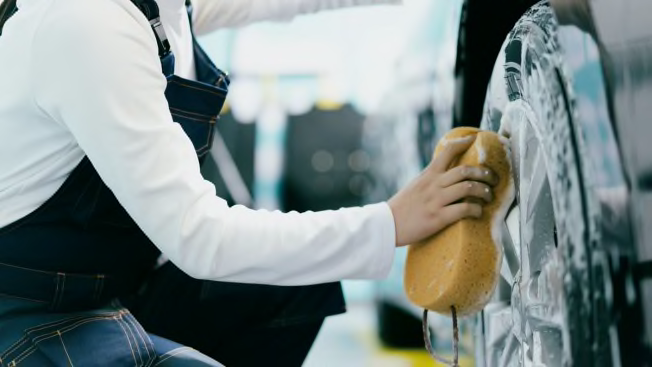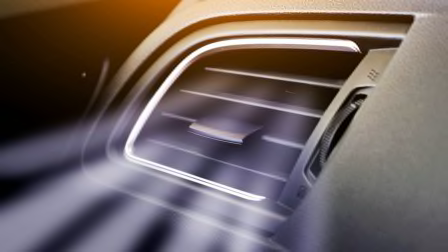Secrets to a Cleaner Car
Expert tips on washing, cleaning wheels and tires, and waxing

The car care aisle at an auto parts store is lined with shelves of soaps, polishes, waxes, tire cleaners, and other preparations, all sold with promises about keeping your car looking like it’s just off the lot. The truth is, if your car’s finish isn’t damaged, giving it a good cleanup requires just a few simple products and practices.
Washing
What to use: Any soap specifically designed for automotive use will be mild enough to not damage the paint or strip the wax, and it won’t leave spots on your car’s finish.
How to do it: Follow the guidance on soap; more isn’t better. The suds will loosen dirt and grime; use a soft sponge or lambswool mitt to scrub. Wash in the shade: Direct sunlight can cause the soap to dry and leave stains. Work quickly, from the roof down, washing one section of the car at a time, in this order: Spray with water, wash with soapy water and the sponge using minimal pressure and a back-and-forth (not circular) motion, rinse off the soap with fresh water, move to the next section. Dry the car with a chamois or microfiber towel (air-drying can leave water spots). If there are bugs, tar, or sap on the car that won’t come off with soap and a sponge, use an automotive bug and tar remover, and be sure to rinse thoroughly.

Photo: Getty Images Photo: Getty Images
Cleaning Wheels and Tires
What to use: The same soap you use on the vehicle’s body can work on the wheels, but built-up brake dust and splatters of road tar may require special cleaners. Choose one designed for the type of wheels on your car or that’s labeled as safe for use on all wheels. The best cleaner for tires is soap and water. Special tire cleaners and dressings are claimed to offer protection and may make tires shine, but many can be harmful and attract dirt more quickly. Besides, tires are manufactured with their own built-in protectants.
How to do it: Start with the wheel cleaner, if you’re using one. Follow by washing with soap and a sponge and rinsing thoroughly. Be sure to use a separate sponge: Wheels pick up a lot of dirt, and you don’t want to grind it into the paint. (Built-in waxes and other protective chemicals working their way to the surface of the tires can make them look dull after you wash them.)

Photo: Getty Images Photo: Getty Images
Waxing
What to use: Waxing won’t improve the shine on a new car, but you should apply it at least once a season to protect the paint from damage by tree sap, bird droppings, and road salt, which can cause the car to look dull after a while. CR’s tests show that most car-specific liquid or paste waxes work well, but even the best ones will last only several weeks before the protective film they provide wears off. Polish is a different thing, and it contains mild abrasives that strip away a thin layer of the finish. Use it only if your car’s paint looks dull.
How to do it: Apply wax away from direct sunlight, when the car’s paint is cool to the touch. (First test the wax in a hidden spot like a doorjamb.) Apply the wax one small section at a time, with a microfiber cloth. Buff it off with another clean microfiber towel as soon as it has dried to a haze. Avoid getting wax on plastic trim because it can leave a residue that’s a chore to remove.

Photo: Getty Images Photo: Getty Images
Best Auto Products of the Year
Car Batteries • Car Tires • SUV and Truck Tires • Winter/Snow Tires • Infant Car Seats
Editor’s Note: This article also appeared in the May/June 2024 issue of Consumer Reports magazine.




















